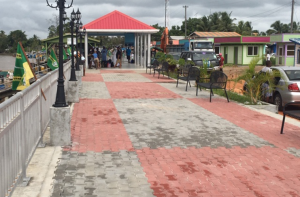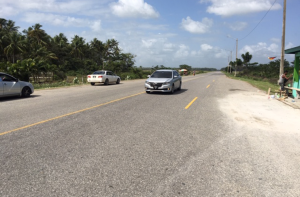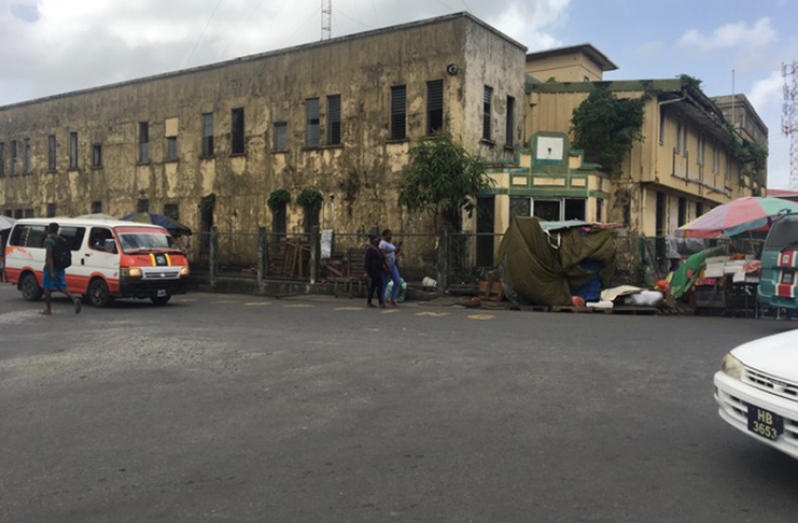By Francis Quamina Farrier
THE term “Fit n’ Prappa” is very popular in Guyana and also in the diaspora at this time. As such, I am engaging it to make a case for the naming of some of our yet unnamed streets and other places, with names which are “Fit n’ Prappa” as we celebrate Guyana’s Jubilee Republic year in this 2020.
Now, let us commence with a really hard one; is the name “The Cooperative Republic of Guyana” a truly “Fit n’ Prappa” name for a country in which the word “COOPERATIVE” is not seen almost everywhere you turn? Why is there no Coop Taxi Service operating the Airport to Georgetown route which would impress the visitor immediately? Why is there absolutely no Coop Minibus Service? There used to be the “Guyana National Cooperative Bank” (GNCB), which is no longer in operation.

While the mane “Guyana” itself comes from the Indigenous citizens and means “Land of Many Waters,” which is a “Fit n’ Prappa” name, Guyana’s capital city Georgetown, is named for King George III who in his maturing years suffered from a mental condition. Mad as a hatter, if you will. The capital of Region Nine, Lethem, is named after one of the most popular governors of colonial British Guiana, Englishman Sir Gordon Lethem. As a boy, I saw that governor on many occasions. He was a good man who took the interests of the ordinary citizens to heart, sometimes leaving his little car at Government House (Now State House) and walking around incognito and learning at first hand from the “Voice of the People”, The Man in the Street.
The year 2000 seems like yesterday for many of us. For others – some who would be voting for the very first time in the upcoming General and Regional Elections – it is unknown since they were not yet born, but at this time are going forward to find their place in the sun. Where have 20 years gone since 2000 we may ask ourselves? TWO DECADES! What permanent strides have we made as a nation, and very importantly, have we honoured and sustained The Cooperative Republic of Guyana as it was fashioned half a century ago? How strong and powerful is the cooperative movement as we celebrate 50 years as the world’s first and only Cooperative Republic. How many buildings are there in our country with the word “Cooperative” impressively written on them?
Names mean quite a lot, and so one generation gives names to buildings, parks, airports, institutions, streets and others, to record the ongoing history of the nation and to honour those who have done great things for their country. The names of certain Guyanese streets and institutions do bear the names of those who have gone before us. Guyana’s principal International Airport at Timehri is named for President Cheddi Jagan. The other International Airport is named for businessman and politician Eugene Correia. The capital of Region 10 is Linden, which is named for President Linden Forbes Sampson Burnham. In Guyana’s second town, New Amsterdam, there are streets which bear the name “Cheddi B Jagan” and “LFS Burnham.”
Even before the turn of the century, Murray Street in Georgetown was changed to “Quamina Street.” A little before that, Pakoo Dam was christened “Carifesta Avenue” in memory of the very first CARIFESTA which was held here in Guyana in 1972. “Festival City,” located in southern Georgetown, was so named because that new Housing Scheme was where the majority of the visiting CARIFESTA performers were accommodated.

In this 50th Republic Jubilee Year, we may ask ourselves what are some of the streets and roads and other public institutions which should be given “Fit n’ Prappa” names. Let us commence with “Seawall Road” which is the northernmost road in Georgetown and stretches from the Kitty Pumping Station in the east, down to the Bandstand. That roadway is waiting for a “Fit n’ Prappa” name. What is your suggestion? Another east-to-west road which is also waiting for a “Fit n’ Prappa” name is that which goes from the Palmyra Public road, in Berbice, to the Berbice River Bridge, and is known as the “Bridge Road.” I recently asked a few Berbicians what name they would give that road, and one came up with, “The Rohan Kanhai Drive.”
There are so many places and streets which ought to be given “Fit n’ Prappa” names in this special Republic Jubilee Year 2020. The roundabout at the northern end of Vlissengen Road in Georgetown; that should be given the name of a prominent villager from Kitty, or from the Guyana Defence Force. What about naming that one block, north to south street which is parallel to Water Street in Georgetown within the John Fernandes complex, “The John Fernandes Way”?
I submit that there are already many Guyanese who have been honoured with their names on streets and buildings, and even towns or sections of towns; “Campbelltown,” located just adjacent to Mahdia in Region Eight, is named in honour and to the memory of Guyana’s Indigenous hero, Stephen Campbell, who was the very first Indigenous Guyanese to sit in the country’s Parliament. So, let’s go for it. Let’s all be “Fit n’ Prappa” in Republic Jubilee Year 2020.



.jpg)








